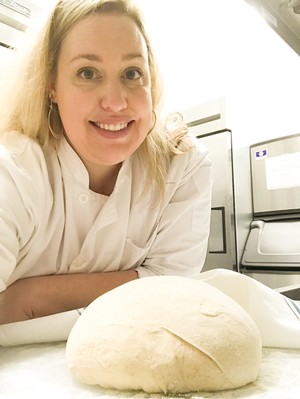Parrish Family Vineyard Blog
Keep up with the Parrish Family Vineyard!
Vines & Wines
Discover more about the Parrish vineyards & winery.
Wine & Food
Wine and food offerings and pairings.
Events
Learn more about upcoming Parrish events & specials!
Visit Paso Robles
Visiting Paso Robles soon? Learn of wineries, food, and lodging for your next trip to Paso Robles' wine country.
Tasting of our White Flight
Winemaker David Parrish and Certified Sommelier Vanessa Igel wanted to take a sneak peek at the Sauvignon Blanc and the newly released Rosé and Chardonnay. These white wines are great to have on hand now that the weather is getting warmer. They help to create a little escape from reality and take a little vacation in your backyard.
The Sauvignon Blanc continues to be a wonderful wine capable of a wide range of pairings from a bowl of fresh raspberries to Thai or even Indian food. At $16 a bottle, we're seeing a lot of people stocking up on it before summer is in full swing.
The Rosé is one of our team favorites. We had a double blind tasting before the shutdown with our wine and other Paso rosés. Ours was a unanimous winner, though they were all delicious! The nose is full of bubblegum, strawberry and cherry Jolly Rancher notes. The wine can be paired with just about anything. Some of our team favorite pairings are potato chips, spinach salad and salmon.
The Chardonnay has a great balanced style with 40% new French oak and 60% stainless steel. This breakdown gives the wine those classic markers of butter and roundness while maintaining crispness and acidity from the stainless steel. It can be paired with anything from scallops to brunch faire.
We hope you enjoy the video of this virtual tasting and that you'll join us for another one this Friday, April 3 on our favorite reds.
Team Tasting of Our 2017 Estate Zinfandel
We wanted to take a moment to enjoy a new wine and a little time with each other (at a safe distance!).
Our 2017 Estate Zinfandel is now released and we love where it's at in its development.
Grown here on our Adelaida Road property, the head-trained Zinfandel vines are almost seven years old and have become a cult favorite for our tasting room guests and club members.
Done in a restrained style, Winemaker David Parrish picks the fruit from the cool side of the vine so that the fruit doesn't get overripe. This style also keeps the wine more medium bodied and a little lower in alcohol. If you like lighter-style, less jammy Zins, then this is one you have to try!
The nose on this Zinfandel is so unique almost coming across as a Pinot Noir because of its spice notes. It is loaded with dried cranberry, rose petals, white pepper and cedar.
On the palate, it has a bright acidity with a lot of roundness as it waves from the front of the mouth to the back.
The acidity and profile make it a great candidate for all kinds of pairings ranging from charcuterie boards, to lentil and sweet potato fritters, all the way to shepherd’s pie and brisket. It's definitely a wine to experiment with and enjoy soon!
Click here to watch our live tasting, and here to order! Pickups at the tasting room are also available by appointment. Email here to schedule one.
What is Racking?
From the vineyard to the winery, Assistant Winemaker Cody Alt is starting the racking process for our 2019 wines this week.
Racking is important for the quality of our wines. It’s when some of the spent lees (dead yeast) falls out of the solution (wine) and no longer contributes to the finished product. Our wines are typically racked three times before they are bottled as part of our winemaking process. First the wine is racked as part of the initial fermentation process, then several months after fermentation has finished and then finally right before bottling.
Today, Cody is racking the 2019 Estate Cabernet Sauvignon moving the wine from one barrel to another to “rack off the lees.” Using a pump, a wand and a flashlight (super technical, right?), he watches the wine come up through the pump to see when it changes from clear to wine with sediment. It’s easy to see because it becomes cloudy instead of clear. Once he sees the sediment, he stops the pump and then leaves the rest of that wine in that barrel. All of the clear wine is what will be kept and ultimately finished into our final wine.
The wines will be racked one more time right before bottling to ensure they are clear and perfect for you to enjoy for years to come!
Click here to watch Cody explain racking and demonstrate. Have any questions? Just ask on our Facebook or Instagram. We love talking wine with you!
Winemaker David Parrish talks about our head-trained Zinfandel vines
We needed a break and ventured outside to catch up with Winemaker David Parrish on what's happening in the vineyard.
Right now, crews are going through the vineyard manually hand cutting each vine to remove last year’s growth and make way for this year’s new buds. It’s an exciting time as we say goodbye to last year’s harvest and prepare for what’s to come in the 2020 vintage.
Hand pruning takes a lot of time, but like most things, the effort is worth it.
For all other varieties, like Cabernet Sauvignon, Malbec, Petite Sirah, etc. the crew hand selects two of last year’s arms to stay into this new harvest. Everything else is cut away. The two arms are then tied down onto the wire to establish a grounding for new growth.
But, our dear Zinfandel, is a little different. Like you can see in the video, everything is cut back and creates a circular form around the trunk of the vine. Nothing is left on it. This is to keep all of the growth as close to the vine as possible for water and also to leave room for where the new growth will take place. Ideally, the crew is creating an outline for where they want this year’s growth to set based on how close each vine is to each other and where the sun will eventually hit the fruit on the vine.
If you’ve had our Parrish Zinfandel, you know that it is a much lighter style and body than a traditional Paso Zin. Winemaker David Parrish likes this style because it’s easier to drink and pairs well with a wide range of foods. The way it gets there is based on where the crews are selecting next year’s vines to grow and that happens right now.
We hope you enjoy this short video on Zinfandel pruning!
Wine Deals!
Friends, please know we have been thinking about you constantly as our world suddenly looks and feels so different. We hope you are well and are safe.
As you've heard us say many times, we believe that wine has the power to create connection and to make memories. And, I think we all need a little of that right now.
With that in mind, we are asking for your support of our small business. We have created a few promos to share our wine with you and to keep our team employed. Literally every bottle helps and we're humbled by your support. Here's the easiest way to head to our wine page.

- Enter SHIP at checkout for 50% shipping on any size order
- The 2017 Sauvingon Blanc is now a flat $16
- New releases of Chardonnay and Zinfandel are an additional 10% with code TEN
Our current hours for our team to field calls and emails is M-F 9am to 5pm.
New Paired Tasting Flight!

We are thrilled to share that we have a new Paired Flight and we cannot wait for you to try it! The Paired Flight is a seasonal showcase featuring three wines crafted by our family and three dishes crafted by our Estate Chef Samantha Eitel. She is thrilled to showcase our wines through her food.
Argentine Prawns and Soba Noodle Salad Paired with 2017 Sauvignon Blanc
Sautéed Red Argentine Prawns nestled on top of an Asian Soba Noodle Salad with a Lemongrass Tamari Vinaigrette and Sesame Seared Baby Bok Choy
"This pairing made me speechless the first time I had it. The dish was perfect at complimenting the wine and making it shine." - Vanessa, Director of Wine Experiences
Braised Short Rib Paired with 2016 Silken
Silken Braised Short Rib with Cherry Wild Mushroom Bordelaise, Crumbled Big Rock Bleu Cheese, sautéed Broccolini topped with Crispy Shallots
"I love the 2016 Silken and to pair it with a tender short rib...delicious." - David, Winemaker & Owner
Bosch Poached Pear Paired with 2016 Estate Cabernet Sauvignon
Cabernet Spiced Cider Poached Pear with Cabernet Raspberry Reduction and Chinese Five Spice Mascarpone Whip
"The pear is a beautiful way to finish the paired flight as it is elegant and I love the warm spices from the mascarpone. The Cabernet and pear end up balancing each other to make a clean finish." - Cecily, General Manager
We invite you to join us for this experience, which is available on Fridays and Saturdays from 12:00pm-2:30pm. We do recommend reservations, please feel free to email reservations@parrishfamilyvineyard.com. The experience is $50 per person and can definitely be enjoyed for lunch. We look forward to seeing you soon!
Cabernet Sauvignon Sourdough
Hi everyone! Cecily Parrish Ray here. I wanted to share with you all my passion for our Cabernet Sourdough bread and the journey I’ve been on to make it for our tasting room. In 2017, my dad and I discussed what our hopes were for the new tasting room at our Adelaida Vineyard and one of those was baking our own bread.
Unsure how to go about this, one morning I stumbled upon an old Julia Child video featuring Nancy Silverton, who started La Brea Bakery. Silverton was crafting a sourdough starter from store bought table grapes. It dawned on me in that moment that we had a whole vineyard and I could use grapes at harvest to make a starter. But, there was one fact that still remained…I didn’t know anything about baking breads.
That changed with a serendipitous visit from Chef William Carter and his wife Katherine of Canyon Villa Bed & Breakfast to our downtown tasting room. He was the Executive Chef of the Playboy Mansion for 30 years and during that time he had begun baking artisan breads. I told him about the Cabernet Sauvignon starter I wanted to do and I asked if he could help me.
For six days in January 2018, Chef Wills worked with me in his kitchen where it smelled of delicious baked bread and my hands were covered in flour. He showed me the ropes of managing a sourdough starter from feeding to baking. He had taken some of our 2017 Cabernet grapes at harvest and began a starter from it. He gifted me with the starter for me to use at our new tasting room. He also taught me other artisan breads. including the focaccia we now make in the tasting room. It was a wonderful experience that I cherish.
I have continued to keep alive the original Cab starter, but in the Fall of 2019, I decided to try my hand at making my own Cab starter. Early on September 22nd, I rushed into the winery with a bucket and grabbed freshly picked grapes from the bins. It was busy season to start working on a side project, but I really wanted to see if I could do my own starter. I then began mixing flour and water with a cheese cloth full of Cabernet Grapes. It bubbled and popped. It smelled like sweet yeast. It took about 12 days for the starter to get to a point where I could begin to use it. I fed it for a while and then did my first bake with it to share with family on Thanksgiving. The bread turned out perfectly.


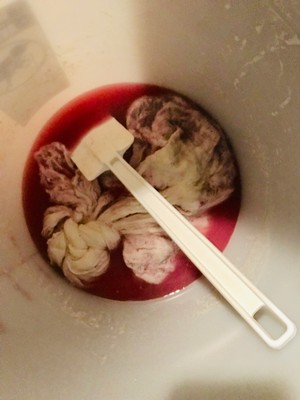
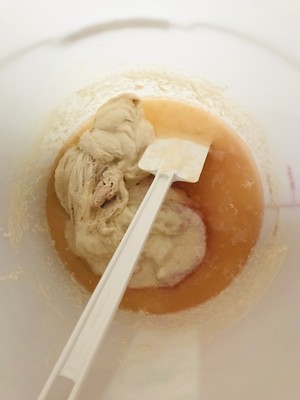
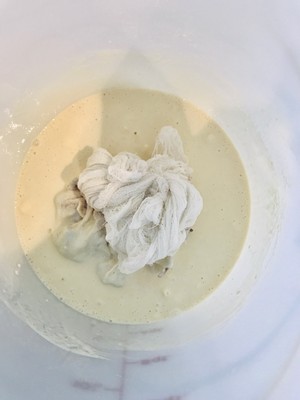

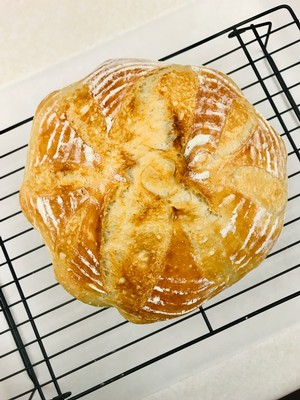
I now have two starters that I am keeping alive and we’ll see if I have time do any others. Regardless if I increase my starter family, I am happy that I can continue to bake Cabernet Sourdough for my family as well as the families that come in to our tasting room. It has been a lot of work, but it fits with the food program my dad and I envisioned for our tasting room and we hope you enjoy it!
Wine & Cigar Night
It was so much fun that we're doing it again!
Mark your calendars for Friday, November 22nd as we host a wine & cigar pairing night. The owner of The Sanctuary in San Luis Obispo will join us with a selection of high-end cigars to smoke on-site or take home with you.
Tickets are $25 and include a glass of wine of your choosing and a decadent dessert made by Estate Chef Rachel Ponce. Cigars can be purchased individually.
Join us from 6:30pm-8:00pm.

New Paired Flight for Fall
You're invited for our new Fall Flight. Estate Chef Rachel Ponce talks about her creation of this exciting new wine and food pairing featuring:
Barrel Aged Berry Sausage and Butterfly Pea Flower Puree Paired with 2017 Sauvignon Blanc
Homemade lamb and pork, barrel aged luxardo cherries, cilantro and juniper sausage on top of a creamy butterfly pea flower and cauliflower puree, garnished with dill, English pea's and feta
Smoked Salmon over Buckwheat Flour Pancake and Cacao Fig Mousse Paired with 2016 Zinfandel
Locally caught salmon, smoked on top of a buckwheat pancake, side of cacao fig mouse, garnished with chives, micro-greens and salmon caviar
Burrata, Roasted Tomato, Prosciutto di Parma and Pesto Paired with 2015 Silken
Homemade burrata, Italian herb-roasted tomato, prosciutto di Parma and drizzled with an arugula hazelnut pesto
David Parrish on The Importance of Leafing
Winemaker and owner David Parrish talks about the importance of leafing the vineyard and why it promotes healthier vines and better grapes.


